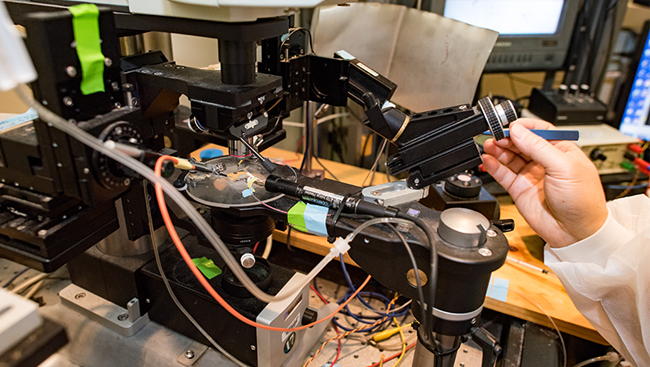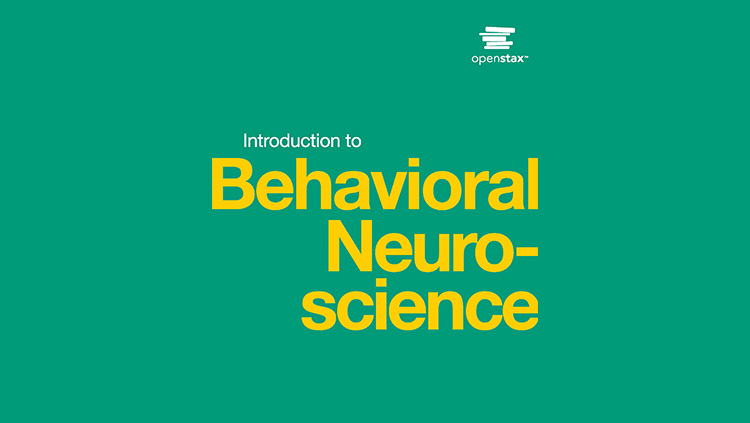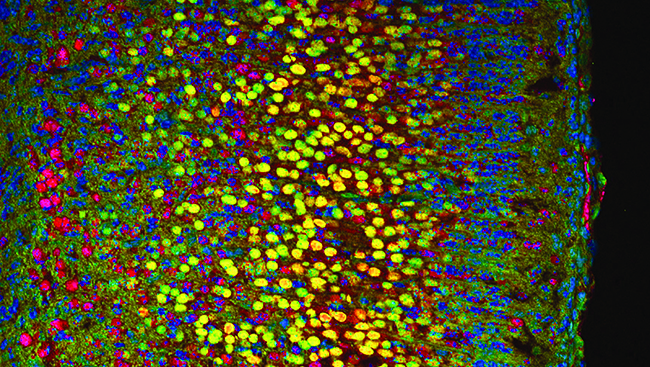Module 8B: Supporting Resources on Caveats and Limitations

The articles below were selected by Stephan Lammel, Karel Svoboda, and David Kupferschmidt, faculty from Module 8 of SfN’s Optogenetics Training Series, to supplement their presentation, Caveats for Designing and Interpreting Optogenetics Approaches.
Use these resources to better understand and control for some of the major caveats related to designing, conducting, and interpreting the results from optogenetic experiments.
Resources Related to Stephan Lammel’s Presentation, Challenges of Designing Interpretable Optogenetics Experiments
Principles of Designing Interpretable Optogenetic Behavior Experiments
Allen, Singer and Boyden provide a conceptual review relevant to the topic of designing and interpreting optogenetics experiments.
Diversity of Transgenic Mouse Models for Selective Targeting of Midbrain Dopamine Neurons
In this 2015 paper, Lammel et al. show a prominent and supposedly dopamine-specific transgenic mouse line exhibits dramatic non-dopamine specific expression patterns in the ventral midbrain. This result corresponds to case study one discussed by Lammel.
Achieving High-Frequency Optical Control of Synaptic Transmission
Jackman et al. show optically-evoked responses can show abnormal synaptic depression when compared to electrical stimulation, and that these responses depend on the specific serotype of the adeno-associated virus expression vector used and the targeted brain region. This result corresponds to case study two outlined by Lammel.
Targeting Neurons and Photons for Optogenetics
In this conceptual review from 2013, Packer, Roska, and Häusser describe technical considerations and potential confounds of optogenetic experiments.
Optogenetics in Neural Systems
Yizhar et al. provide an extensive review on the application of optogenetics in neuroscience and highlight important challenges and technical considerations.
Resources Related to Karel Svoboda’s Presentation, Interpreting Optogenetics Experiments: It’s Tricky… and Requires Neurophysiology
Genetic Dissection of Neural Circuits: A Decade of Progress
Luo, Callaway, and Svoboda provide an extensive review of methods for analysis of neural circuits, with a substantial focus on optogenetics. This resource is written for beginning graduate students or researchers new to the field.
Herman et al. show photostimulation of ChR2-expressing neurons in certain types of neurons can cause depolarization block and inactivate these neurons in a cell autonomous manner. This result corresponds to case study 1 described by Svoboda.
Gain Control by Layer Six in Cortical Circuits of Vision
Oleson et al. demonstrate how photostimulation of ChR2-expressing L6 neurons silences neurons in other cortical layers. This result corresponds to case study two shared by Svoboda.
Flow of Cortical Activity Underlying a Tactile Decision in Mice
Guo et al. report how photostimulation of ChR2-expressing fast-spiking neurons can be used to inactivate one millimeter brain volumes with approximately 10 millisecond temporal resolution (photoinhibition). This paper identifies a frontal cortical area (anterior lateral motor cortex) using an unbiased photoinhibition screen. This result corresponds to case study three highlighted by Svoboda.
Robust Neuronal Dynamics in Premotor Cortex During Motor Planning
Li, Daie, Svoboda, and Druckmann show memory traces in the context of motor planning are distributed across multiple brain regions. The distributed nature of this representation produces robustness to perturbation. This result corresponds to case study three explained by Svoboda.
Navigating the Neural Space in Search of the Neural Code
Jazayeri and Afraz provide a conceptual review relevant to the topic of interpreting optogenetic experiments.
Resources that support David Kupferschmidt’s presentation, Synaptic Plasticity and Complex Neurochemistry
Engineering a Memory with LTD and LTP
Nabavi et al. provide clear examples of how optical stimulation can drive bidirectional synaptic plasticity with stark consequences for the expression of conditioned fear responses.
Bidirectional and Long-Lasting Control of Alcohol-Seeking Behavior by Corticostriatal LTP and LTD
Ma et al. demonstrate how optically-induced potentiation and depression of corticostriatal inputs can bidirectionally alter ethanol self-administration behavior.
Dopaminergic Terminals in the Nucleus Accumbens but Not the Dorsal Striatum Corelease Glutamate
Stuber et al. provide direct evidence of the co-release of glutamate and dopamine from genetically defined dopamine neurons in the mammalian ventral midbrain.
Dopaminergic Neurons Inhibit Striatal Output Through Non-Canonical Release of GABA
Tritsch, Ding, and Sabatini provide evidence supporting the co-release of GABA and dopamine from genetically defined dopamine neurons in the mammalian ventral midbrain.
Visit the Community forum for all eight modules to share your insights and best practices, ask questions, and engage with other training series’ participants.
Complete this short survey to provide valuable feedback about Module 8 to SfN and the series faculty.







